Geology

Over 200 million years ago, a mass extinction wiped out an estimated 76 percent of marine and terrestrial species. It marked the end of the Triassic period and the onset of the Jurassic, clearing the way for dinosaurs to dominate Earth for the next 135 million years.
It's not clear what caused the end-Triassic extinction, although most scientists agree on a likely scenario; over a relatively short time period, massive volcanic eruptions from a large region known as the Central Atlantic Magmatic Province (CAMP) spewed forth huge amounts of lava and gas, including carbon dioxide, sulfur…

Scientists have found a layer of liquefied molten rock in Earth's mantle that may be acting as a lubricant for the sliding motions of the planet's massive tectonic plates. The discovery was made at the magma layer at the Middle America trench offshore Nicaragua. Using advanced seafloor electromagnetic imaging technology pioneered atScripps Institution of Oceanography at UC San Dieg , the scientists imaged a 16 mile-thick layer of partially melted mantle rock below the edge of the Cocos plate where it moves underneath Central America.
The new images of magma were captured during a 2010…

Ancient rises in sea levels and global warming are partially attributable to cyclical activity below the earth's surface, according to a new analysis of geological studies.
New York University's Michael Rampino and Carleton University's Andreas Prokoph analysis considers long-term fluctuations in global climate, diversity of marine organisms, and sea level changes, aiming to identify a unifying cause for these changes. While much scientific study has centered on phenomena above the earth's crust, less attention has historically been paid to changes deep inside our planet.
In recent…

Planet Earth is a magnificent planet and that is an understatement! I think it looks particularly good from space, although I do appreciate the daily close-ups I am literally living in here at the edge of the woods in Norway.
Some say that the little blue dot is one of the most important images ever taken, showing how truly small we are, not only us individually, but in fact our entire planet. It is so small it is not even noise as I love to say, making a point of my background from astrophysics.
Now, NASA has come up with yet another brilliant way of engaging the public. NASA and its…

There is evidence of an ancient micro-continent buried beneath the Indian Ocean. The ancient continent is a thousand miles in length and extends from the Seychelles to the island of Mauritius. It contains rocks up to 2 billion years old - much older than the Indian Ocean itself, which has formed only in the last 165 million years.
The research team believe that this micro-continent, which they have named Mauritia, was split off from Madagascar and India between 61 and 83 million years ago as one single land mass rifted apart to form the continents around the Indian Ocean that we know…
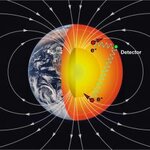
Researchers have described a new technique that might one day reveal in higher detail than ever before the composition and characteristics of the deep Earth. There's just one catch: it can't exist.
Instead of being part of the natural world we know, where we have gravity, the weak and strong nuclear forces and electromagnetism the new technique would require a fifth, hypothetical force of nature - a long-range spin-spin interaction. The building blocks of atoms —electrons, protons, and neutrons — separated over vast distances could still "feel" each other's presence.…
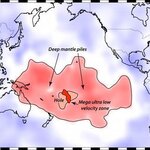
A new study in Earth and Planetary Science Letters analyzed seismic waves that bombarded Earth's core and indicates that two or more continent-sized chunks of rock are colliding as they move at the bottom of Earth's thick mantle, atop the thicker core some 1,800 miles beneath the Pacific. That is creating a Florida-sized zone of partly molten rock that may be the root of either of two kinds of massive eruptions far in the future:
Hotspot plume supervolcano eruptions like those during the past 2 million years at Wyoming's Yellowstone caldera, which covered North America with volcanic ash.…
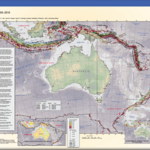
Puh! Another big one. Earthquakes of magnitude 8.0 are big to put it mildly. Luckily it happened deeper in the crust than first anticipated and thus the resulting tsunami wasn't as devastating as it very well could have been. While writing this 5 people are reported dead, but I am not so sure about the source of that information (only from news media).
The Solomon islands in the Pacific Ocean are situated right smack on the Ring of Fire - a 'ring' formed by tectonic plates meeting and rubbing up against each other. Along the Ring of Fire there is a lot going on in terms of earthquakes and…
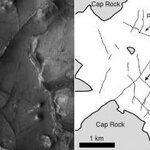
Ridges spidering through impact craters on Mars appear to be the fossilized remnants of underground cracks through which water once flowed, according to a new analysis in Geophysical Research Letters.
The finding lends credence to the idea that the subsurface environment on Mars once had an active hydrology. Since this is about another planet, it is also required in 2013 that all science articles imply the discovery could have important ramifications for finding life on other planets.
The ridges, many of them hundreds of meters in length and a few meters wide, had been noted in…
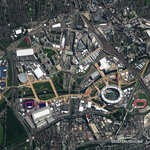
All men and women to the atlases!
I do not know about you, but when there is some big event going on in the world, positive or negative, I run for maps. I want to know exactly where the action takes place. These days the news in Norway are filled with the dramatic terror attack on the In Amenas gas field in Algeria. Several of the hostages are Norwegian and our oil company Statoil is running the site together with British BP and Algeria's state-own oil company. The most used sentence both by politicians and journalist is “we do not know”. There are several reasons for that, and…